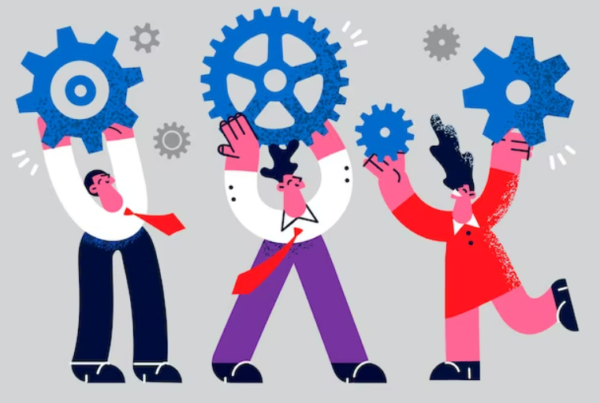Introduction
In addition to being happier, healthier, and more contented, well-managed employees are also more likely to promote productivity, better goods and services, and innovation. Employee engagement, a notion that has gained ground in management thinking over the past ten years, is based on this mutual benefits perspective of motivation and human resource management. The nature of employee engagement, its relationship to motivation, well-being, and other characteristics of the workplace, as well as how employers might improve it, are all covered in this article. It offers guidance on how to create a motivated, engaged workforce by comprehending research-based ideas, evaluating employee engagement, enlisting the help of senior executives and line managers, and tailoring employee engagement initiatives to the needs of the organization.
What exactly is worker engagement?
Employee involvement is not widely understood. The 2009 MacLeod Review, for instance, uncovered almost 50 definitions! Kahn’s was among the first, and it focuses on how people “express themselves physically, cognitively, and emotionally” when they engage with their employment. This refers to an interior state of being, yet one that is intimately related to actions, like making an additional effort or “going the extra mile.” Academic research has made one thing very clear: employees’ psychological states are thought to play a role in their level of engagement. It needs to be distinguished from employee performance, workplace culture, and management decisions. Some definitions, meanwhile, are more in line with job satisfaction. These are frequently used by consultancies and pertain to several facets of organizational life. The Gallup questionnaire, for instance, asks about the following topics: job clarity, job resources, work that plays to one’s abilities, recognition, social support and cohesion, personal growth, employee voice, meaningfulness of work, and colleagues’ motivation. Due to the difficulty in separating engagement from the other ideas, these measures may lead to misinterpretation. We advocate the narrower, more focused perspective of the occupational psychologists at Utrecht University, who define “job engagement” as a mental state in which employees exhibit:
- Vigour (energy, resilience and effort)
- A commitment (for example, enthusiasm, inspiration and pride)
- Concentration and being immersed in one’s job are examples of absorption.
Although this strategy is limited, it is consistent with the finest engagement studies and is therefore likely to result in wise choices.
Is the idea of employee involvement useful?
Progressive people management methods have been firmly entrenched on businesses’ agendas thanks to a persistent focus on employee engagement over the past decade or so. In a way that other notions, like high-performance working, haven’t, it has integrated into managerial practice. Although there is disagreement over what it is, it has also received a great deal of criticism. Some HR professionals appear pleased with the state of affairs. Engagement is a catch-all term to denote a multidimensional people management approach since it is a “wide church.” To fit their context or plan, employers might customize how they view engagement. But because there is no universal agreement on what involvement is, there are numerous techniques to measure it and varying opinions on how to attain it. Effective action is hampered by vague or excessively broad definitions because it’s not clear what the issue or opportunity is or what needs to be done.
Employers should choose between the following two methods:
- Treat employee engagement as a psychological condition and an all-encompassing term to express a wide range of people strategy, and when necessary, refer to more precise ideas like job engagement or organizational commitment. This enables both clarity on pressing issues and a wide strategic perspective.
- Focus on specific and well-established definitions
A comprehensive employee engagement plan may concentrate on:
- Extrinsic motivation (appreciating labor for its own sake) and intrinsic motivation are two ways that employees direct their efforts to attain goals (working to get a reward)
- Organizational identity is the congruence of an employee’s self-perception and that of their employer
- Organizational commitment: a sense of loyalty and dedication to the organization.
What advantages does employee engagement offer?
It is clear that feeling engaged benefits employees. The majority of definitions of engagement refer to workers who are more motivated, fulfilled, and in better physical and mental health. Measures of engagement have been linked to improved performance in organizations, according to study. More generally, other studies demonstrate beneficial correlations between elements of employee engagement and other business measures, such as client happiness, productivity, innovation, staff retention, efficiency, and performance in terms of health and safety. However, there are some issues with this study. The vast majority of studies just find correlation, not cause and effect. However, other studies do indicate a causal link, with work engagement predicting both task performance and contextual performance, or providing additional value to the organization outside of one’s primary role. Unfortunately, these associations are weak; in order to identify them, performance differences would need to be quantified because they are too small to be seen in normal activity. Work engagement and performance influence one another in a somewhat reciprocal manner. Therefore, better performance will result from more engaged employees, but better performance will also increase employee engagement.
Evaluating and quantifying employee satisfaction
Obtaining the opinions of staff In each organization, there may be distinct factors that encourage or discourage dedication or motivation. Employers must therefore provide employees with effective avenues for communication and pay close attention to their issues and goals. Regular employee attitude surveys are conducted by many medium-sized and big organizations, frequently in conjunction with qualitative techniques like focus groups. The optimum strategy is a hybrid one because various methodologies offer various advantages. A representative view of experiences within the organization is provided via employee surveys. Contrarily, qualitative methods offer a greater grasp of employee experiences in their own words and can provide a more in-depth explanation of why people are pleased or unhappy.
Employee Engagement Measurement People analytics play a significant role in determining an organization’s strengths and shortcomings once it reaches a particular size. An essential component of this is measuring various measures of employee engagement. It is true that “what gets measured gets attention,” and measurement may show how different organizational components compare, how motivation changes over time, and what the primary motivators and demotivators are for a certain population. The methods employed, meanwhile, may not always be ideal. Composite measures, which combine survey items to get an all-encompassing total engagement score, might drastically oversimplify the situation. Employee engagement has many facets, making it simple for metrics to combine quite different aspects and, as a result, be very challenging to implement. People analytics are quite useful, but they must be trustworthy and provide information that is particular and clear enough to be put to use. Utilizing engagement indicators that are well-established and precise, such the Utrecht Work Engagement Scale, is advised (see above). A valid and dependable indicator seems to be the most recent three-item version. It contains the following statements:
- “At work, I feel bursting with enthusiasm” (vigour)
- “I love my job,” you said (dedication)
- I’m totally focused on my work (absorption)
If you see organizational commitment, identity, and motivation as subsets of engagement, we advise measuring those terms separately. For each of them, there are widely accepted and well-supported metrics; more details are available in our evidence evaluation.
How to create a motivated and engaged workforce
Employee engagement factors and obstacles According to research, a variety of factors in the workplace, such as personality traits (such as resilience and self-assurance), job demands and resources, leadership and management, organizational climate or culture (such as a focus on psychological safety and high-quality services), and management techniques, all contribute to employee engagement (from mindfulness interventions to training courses). Autonomy or self-determination is one of the most well-established factors that affect motivation; in other words, having the ability to shape one’s career makes it more fulfilling and pleasurable. Four important “enablers” of employee engagement were outlined in the 2009 UK MacLeod Review: solid strategic story about the organization is provided by the leadership.
line managers who inspire, assist, and empower their staff. Employee involvement in decision-making throughout the organization through employee voice.
What we say and do must match for organizational integrity; stated principles must be mirrored in the real organizational culture.
It’s critical to keep in mind that both people management and HR systems can hinder employee engagement as well as promote it. Employers need to be careful not to make the mistake of assuming that the only way to encourage employees is for management to inspire them. People are inherently driven to do a good job, and when they feel overworked, under supported, or frustrated, they lose that drive.
Strategies for involving employees
A variety of sound people management and learning and development techniques will be incorporated into effective employee engagement methods. They should be comprehensive, putting an emphasis on the motivation and wellbeing of employees as well as assisting staff members in understanding how they contribute to the mission, goals, and culture of the organization. Additionally, strategies should be multifaceted, coordinating cross-organizational activities, learning and development, HR rules and systems, and communications. As a result, they need top leaders and line managers across the organization to actively support and buy into them. Our document Giving advice on how to create managers who support employee engagement, health, and well-being, developing managers for engagement and well-being. Naturally, some workers will be more involved than others, and person-job fit will also have a significant impact on engagement. Therefore, hiring procedures and performance evaluation are crucial instruments for developing a motivated, engaged workforce.




